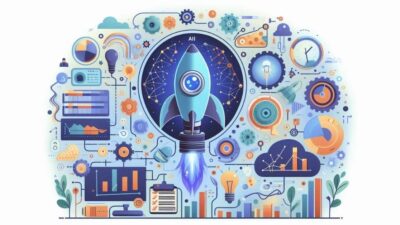
Sales is no longer a solo sport. In today’s fast-paced, cross-functional environment, success hinges on collaboration—between SDRs and AEs, marketing and sales, and even between human reps and digital tools. But collaboration often suffers when teams operate in silos, communication gets lost in the noise, and insights are buried deep in CRMs. This is where AI in sales team collaboration begins to shine. By enabling real-time data sharing, automated communication, and intelligent recommendations, AI empowers sales teams to work smarter, faster, and more cohesively than ever before.
Why Sales Collaboration Needs a Boost
Sales teams often struggle with fragmented workflows. SDRs may not pass full context to AEs. Marketing may generate leads that don’t align with sales goals. Managers lack visibility into rep activity or pipeline health. The result? Misalignment, duplicated efforts, and missed revenue opportunities.
AI for sales collaboration addresses these pain points by centralizing intelligence, enhancing communication, and fostering a proactive, data-informed culture. Instead of chasing down updates or scrambling to sync, AI ensures the right people have the right information at the right time.
How AI Supercharges Sales Team Collaboration
Let’s break down how AI-powered sales communication transforms teamwork at every level of the sales organization.
1. Real-Time Data Sharing and Syncing
AI-integrated CRMs and communication tools eliminate the need for manual updates. Sales activities, deal progress, and lead interactions are automatically logged and shared across team members. AI ensures data consistency across the board—so AEs know what SDRs have already covered, and managers get a clear view without chasing reports.
This real-time sales data sharing creates a single source of truth—removing guesswork and saving hours of back-and-forth.
2. Smarter Handoffs Between SDRs and AEs
When a qualified lead is ready for handoff, AI ensures all context—call transcripts, behavioral signals, objections, and pain points—is captured and surfaced to the AE. No more “starting from scratch.” Voice AI, like that from Salesix.ai, records conversations and uses natural language processing to extract key insights and auto-populate CRM fields.
This seamless transition drives higher conversion rates and creates a smoother buyer journey.
3. AI-Driven Sales Enablement
AI recommends the right content, talk tracks, or responses based on the buyer’s stage or profile. This empowers teams to align their messaging and strategy. Whether it’s a pitch deck or a follow-up email, AI in sales enablement ensures that everyone is singing from the same song sheet.
AI can also detect when team members deviate from successful patterns—and prompt course correction in real time.
4. Predictive Collaboration and Deal Coaching
AI doesn’t just track—it advises. By analyzing pipeline health, win/loss trends, and rep behavior, AI offers coaching insights and alerts about at-risk deals. This allows sales managers to step in proactively and collaborate with reps on rescue strategies, instead of reacting after deals are lost.
AI-driven decision-making in sales gives the team a tactical edge—one that’s grounded in data, not delay.
5. Cross-Functional Alignment with Marketing and Customer Success
AI connects dots across departments, helping marketing understand which campaigns yield the best leads, and enabling customer success teams to anticipate needs even before onboarding begins. Collaborative AI platforms provide a 360-degree view of the customer journey—bridging the gap between pre-sale and post-sale.
With collaboration in sales using AI, the entire revenue engine becomes more synchronized.
Top AI Tools for Sales Team Collaboration
Here are some cutting-edge tools helping teams collaborate more intelligently:
- Salesix.ai – AI voice agents and communication orchestration across SDR and AE workflows.
- Slack with AI integrations – Automated updates and reminders for deal movement, meetings, and lead activity.
- Gong.io – AI-powered call analysis and collaboration insights.
- Chorus.ai – Conversation intelligence for cross-functional sales coaching.
- HubSpot CRM with AI – Real-time data sync, task automation, and team alignment features.
These platforms don’t just support teamwork—they optimize it.
The Human-AI Collaboration Advantage
It’s important to note: AI isn’t replacing human collaboration—it’s enhancing it. Reps still bring the emotional intelligence and adaptability that machines can’t replicate. But AI removes the friction: it captures, organizes, and surfaces what matters most so human teams can do what they do best—build trust, solve problems, and close deals.
In essence, sales productivity with AI comes from letting humans lead while machines support.
Conclusion
The future of sales collaboration is intelligent, integrated, and AI-powered. From real-time communication to predictive coaching and seamless handoffs, AI in sales team collaboration is transforming how modern sales organizations operate. No more silos. No more missed signals. Just sharper alignment, faster execution, and bigger wins—together. For organizations serious about scaling efficiently and competitively, embracing AI isn’t optional. It’s the new standard for high-performing sales teams.




